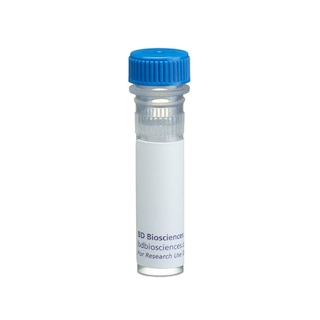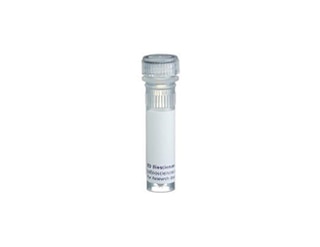-
Reagents
- Flow Cytometry Reagents
-
Western Blotting and Molecular Reagents
- Immunoassay Reagents
-
Single-Cell Multiomics Reagents
- BD® OMICS-Guard Sample Preservation Buffer
- BD® AbSeq Assay
- BD® OMICS-One Immune Profiler Protein Panel
- BD® Single-Cell Multiplexing Kit
- BD Rhapsody™ ATAC-Seq Assays
- BD Rhapsody™ Whole Transcriptome Analysis (WTA) Amplification Kit
- BD Rhapsody™ TCR/BCR Next Multiomic Assays
- BD Rhapsody™ Targeted mRNA Kits
- BD Rhapsody™ Accessory Kits
-
Functional Assays
-
Microscopy and Imaging Reagents
-
Cell Preparation and Separation Reagents
-
- BD® OMICS-Guard Sample Preservation Buffer
- BD® AbSeq Assay
- BD® OMICS-One Immune Profiler Protein Panel
- BD® Single-Cell Multiplexing Kit
- BD Rhapsody™ ATAC-Seq Assays
- BD Rhapsody™ Whole Transcriptome Analysis (WTA) Amplification Kit
- BD Rhapsody™ TCR/BCR Next Multiomic Assays
- BD Rhapsody™ Targeted mRNA Kits
- BD Rhapsody™ Accessory Kits
- United States (English)
-
Change country/language
Old Browser
This page has been recently translated and is available in French now.
Looks like you're visiting us from {countryName}.
Would you like to stay on the current country site or be switched to your country?






Immunohistochemical staining of granulocytes. The frozen section of normal mouse spleen was reacted with RB6-8C5 mAb. Granulocytes are identified by the brown labeling of their cell surface membranes.

Rat IgG2bκ isotype control. The frozen section of normal mouse spleen was reacted with rat IgG2b isotype control (Cat. No. 559478).


BD Pharmingen™ Purified Rat Anti-Mouse Ly-6G and Ly-6C

BD Pharmingen™ Purified Rat Anti-Mouse Ly-6G and Ly-6C

Regulatory Status Legend
Any use of products other than the permitted use without the express written authorization of Becton, Dickinson and Company is strictly prohibited.
Preparation And Storage
Recommended Assay Procedures
For optimal indirect immunohistochemical staining, the RB6-8C5 antibody should be titrated (1:10 to 1:50 diluent) and visualized via a three-step staining procedure in combination with Biotin Anti-Rat IgG2b (Cat. No. 550327) as the secondary antibody and Streptavidin-HRP (Cat. No. 550946) together with the DAB detection system (Cat. No. 550880). Alternatively, Anti-Rat Ig HRP Detection Kit (Cat. No. 551013) containing all secondary reagents, may be used. An appropriate isotype control is Purified Rat IgG2b κ Isotype Control, (Cat. No. 559478).
Product Notices
- Since applications vary, each investigator should titrate the reagent to obtain optimal results.
- Caution: Sodium azide yields highly toxic hydrazoic acid under acidic conditions. Dilute azide compounds in running water before discarding to avoid accumulation of potentially explosive deposits in plumbing.
- Source of all serum proteins is from USDA inspected abattoirs located in the United States.
- This antibody has been developed for the immunohistochemistry application. However, a routine immunohistochemistry test is not performed on every lot. Researchers are encouraged to titrate the reagent for optimal performance.
- An isotype control should be used at the same concentration as the antibody of interest.
- Please refer to www.bdbiosciences.com/us/s/resources for technical protocols.
Companion Products





The RB6-8C5 monoclonal antibody recognizes a common epitope on Ly-6G and Ly-6C, previously known as the myeloid differentiation antigen Gr-1. In the bone marrow, the level of antigen expression is directly correlated with granulocyte differentiation and maturation. The antigen is also expressed on the monocyte lineage in the bone marrow, but not on erythroid cells. In the periphery, RB6-8C5 antibody recognizes granulocytes (neutrophils and eosinophils) and monocytes. The RB6-8C5 antibody is a component of the "lineage cocktail" used in studies of hematopoietic cell lineages. The 1A8 antibody (Cat. No. 551461) specifically recognizes Ly-6G, but not Ly-6C.
Based on comparison of the staining patterns given by 1A8 versus RB6-8C5 antibodies on total blood leucocytes, it is evident that the 1A8 antibody stains the RB6-8C5-bright population, corresponding to Ly-6G-expressing granulocytes; whereas, the RB6-8C5-dim population is 1A8-negative and corresponds to Ly-6C-expressing lymphocytes and monocytes. Please refer to the Technical Data Sheets for Cat. No. 551459 and 553128 for more detailed information.
Development References (11)
-
Brummer E, Sugar AM, Stevens DA. Immunological activation of polymorphonuclear neutrophils for fungal killing: studies with murine cells and blastomyces dermatitidis in vitro. J Leukoc Biol. 1984; 36(4):505-520. (Clone-specific: Cytotoxicity). View Reference
-
Conlan JW, North RJ. Neutrophils are essential for early anti-Listeria defense in the liver, but not in the spleen or peritoneal cavity, as revealed by a granulocyte-depleting monoclonal antibody. J Exp Med. 1994; 179(1):259-268. (Clone-specific: Depletion, Western blot). View Reference
-
Czuprynski CJ, Brown JF, Maroushek N, Wagner RD, Steinberg H. Administration of anti-granulocyte mAb RB6-8C5 impairs the resistance of mice to Listeria monocytogenes infection. J Immunol. 1994; 152(4):1836-1846. (Clone-specific: Depletion). View Reference
-
Fleming TJ, Fleming ML, Malek TR. Selective expression of Ly-6G on myeloid lineage cells in mouse bone marrow. RB6-8C5 mAb to granulocyte-differentiation antigen (Gr-1) detects members of the Ly-6 family. J Immunol. 1993; 151(5):2399-2408. (Clone-specific: Immunoprecipitation). View Reference
-
Hestdal K, Ruscetti FW, Ihle JN, et al. Characterization and regulation of RB6-8C5 antigen expression on murine bone marrow cells. J Immunol. 1991; 147(1):22-28. (Biology). View Reference
-
Jutila MA, Kroese FG, Jutila KL, et al. Ly-6C is a monocyte/macrophage and endothelial cell differentiation antigen regulated by interferon-gamma. Eur J Immunol. 1988; 18(11):1819-1826. (Clone-specific: Western blot). View Reference
-
Lagasse E, Weissman IL. Flow cytometric identification of murine neutrophils and monocytes. J Immunol Methods. 1996; 197(1-2):139-150. (Biology). View Reference
-
Lewinsohn DM, Bargatze RF, Butcher EC. Leukocyte-endothelial cell recognition: evidence of a common molecular mechanism shared by neutrophils, lymphocytes, and other leukocytes. J Immunol. 1987; 138(12):4313-4321. (Biology). View Reference
-
Stoppacciaro A, Melani C, Parenza M, et al. Regression of an established tumor genetically modified to release granulocyte colony-stimulating factor requires granulocyte-T cell cooperation and T cell-produced interferon gamma. J Exp Med. 1993; 178(1):151-161. (Clone-specific: Depletion, Immunohistochemistry). View Reference
-
Tepper RI, Coffman RL, Leder P. An eosinophil-dependent mechanism for the antitumor effect of interleukin-4. Science. 1992; 257(5069):548-551. (Biology). View Reference
-
Tumpey TM, Chen SH, Oakes JE, Lausch RN. Neutrophil-mediated suppression of virus replication after herpes simplex virus type 1 infection of the murine cornea. J Virol. 1996; 70(2):898-904. (Clone-specific: Depletion). View Reference
Please refer to Support Documents for Quality Certificates
Global - Refer to manufacturer's instructions for use and related User Manuals and Technical data sheets before using this products as described
Comparisons, where applicable, are made against older BD Technology, manual methods or are general performance claims. Comparisons are not made against non-BD technologies, unless otherwise noted.
For Research Use Only. Not for use in diagnostic or therapeutic procedures.